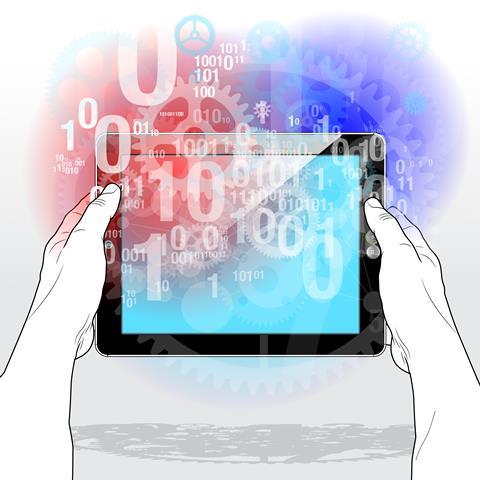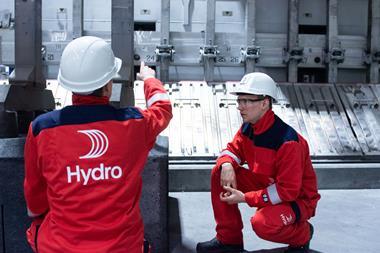The next industrial revolution is nigh with the advent of product lifecycle management – or Industry 4.0 – which will super-connect all the diverse elements of manufacturing

Part of a manufacturing risk series supported by FM Global
The overnight success of the America’s Cup challenge led by Sir Ben Ainslie owes much to a process that will soon be on the lips of every European manufacturer as we head into the next industrial revolution. The process that so rapidly accelerated Land Rover BAR’s catamaran to the status of a leading contender is known as product lifecycle management, or PLM.
By employing PLM in the development of this extreme craft, the challenger’s boffins were able to simulate, analyse and test a vast number of different geometries critical to its performance. “Thanks to [the software], we can test 100 geometries at the touch of a button,” says Land Rover BAR’s technical director Andy Claughton.
Welcome to Industry 4.0, a genuine revolution that through digitisation links all the elements of manufacturing in a way that enables them to communicate constantly via the internet and virtual networks.
The ultimate in intelligent manufacturing, this real-time conversation goes on across production lines, supply chains, tools and workstations, and of course humans.
According to scientists at the forefront of Industry 4.0, the resolution has not yet reached full factory-wide scale, although experts say they are closing on this digital Holy Grail and the potential is set to be mind-blowing. Take, for example the so-called RFID (radio frequency identification) tags commonly attached to all kinds of products, from jeans to cars. Today’s tags don’t do much because of their limited communication range and storage capacity. Thus they serve as simple position finders.
But Siemens head of product management Markus Weinländer foresees a new generation of RFID systems with massive storage capacity that act as transponders.
“They can make a major contribution to the realisation of Industry 4.0 by acting as the eyes and ears of IT,” he says. “For the first time transponders will be able to carry additional information, such as the production requirements, together with their assembly plan. All of this will be readable at relatively large distances.”
Among other benefits, he predicts this new wave of RFID tags with four kilobytes of storage will greatly facilitate the mass customisation that consumers increasingly demand because they will contain all the required bespoke information.
“To remain competitive in today’s global market environment, many companies now have to be able to produce in tiny batches without higher costs,” he says.
PLM in action
How does PLM work? It “realises” products by simulating a digital twin that is essentially a virtual copy of the end product. It is not possible just to touch it or feel it.
Thus, regardless of whether the product is a high-tech catamaran or a truck axle, it can be virtually developed in differing configurations and thoroughly tested along the entire development chain before the button is pressed and the assembly line starts.
This is not pie in the sky. The Mars Rover, which has been operating on the red planet since 2012, went through thousands of PLM-enabled simulations before the design was finally signed off.
Closer to earth, Detroit-based automotive supplier American Axle developed dramatically quieter and smoother axles far more effectively and cheaply by using digital twins in the design process. As a welcome bonus, the warranty costs of American Axle dropped by 20%-30% a year because the final product was of a higher quality.
Digital conversation
The super-connected factory in which all people and machines talk to each other in a digital conversation could be standard 10 years from now, predicts Siemens.
Because every element “knows” what to do, products will actually control their own manufacture. “In this way, the production process will be recorded and controlled at a virtual level from start to finish,” Siemens predicts.
And because the R&D department will be tied in to the digital conversation, constant improvements in product quality will become the norm.
Is Industry 4.0 then the manufacturing sector’s dream come true? Although it’s too early for the risks inherent in 100% smart production to become evident, lessons can be learned from today’s factories.
Production systems that rely on radio frequencies, cloud computing and top-to-bottom digitisation, are clearly exposed to cyber risk. Even today’s much less digitised manufacturers have experienced rogue outages. And what are the risks of an RFID tag containing sensitive commercial information falling into the wrong hands?
But through all of its iterations, from the original industrial revolution to the current one of mass production, the sector has shown an ability to manage most of the challenges it has faced along the way.




















No comments yet